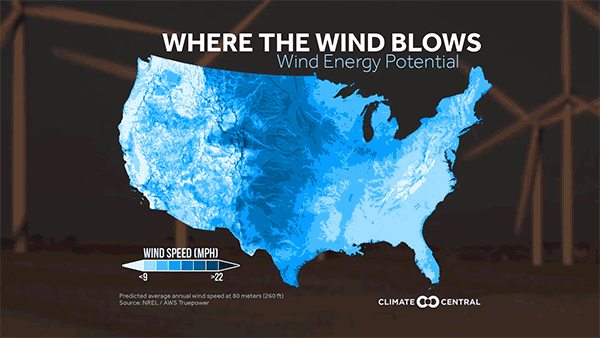





We’ve reached the end of the windiest month of the year. But in other months, wind will continue to play an increasingly large role in the U.S. power mix. At the end of last year, wind capacity surpassed hydroelectric capacity for the first time in the U.S.
Over the past decade, wind power has exploded in the U.S. Over that time, generating capacity from wind has increased by a factor of seven, surpassing 82,000 megawatts, or enough to power 24 million homes.
Wind is most consistent in the Great Plains and on the Front Range of the Rockies. The prevailing west winds come rushing off of the mountains, making the area especially conducive for generating electricity, as higher wind speeds produce disproportionately more power from a wind turbine.
The winds in the Southeast are not as consistent, especially in the doldrums of summer. Despite the lack of a consistent breeze across the region as a whole, the Southeast coast and offshore areas in particular allow for a modest amount of power generation.
Wind power is about more than electricity. The rapid installation of wind turbines has spurred job growth in the U.S.:
The power provided by wind also means that the need for fossil fuels is declining, effectively slowing the increase of heat-trapping carbon dioxide emitted into the atmosphere.
Visit last summer’s Climate Matters for more on solar power, another booming renewable energy industry.
Windiest locations are based on a height of 80 meters (260 feet), typical tower height of wind turbines. Data provided by AWS Truepower via National Renewable Energy Laboratory. Job data provided by American Wind Energy Association for 2016. Carbon dioxide savings based on total installed wind capacity for each state, an operating capacity factor of 35%, and estimated carbon dioxide emissions avoided per unit of wind electricity in each state.
